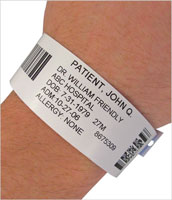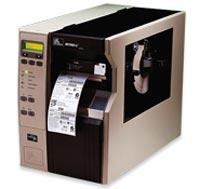Alaris System: “The Alaris® System by Cardinal Health is designed for infusions and patient monitoring. It helps protect the patient and clinician from consequences of medical errors and helps positively affect patient outcomes through continuous improvements in clinical practice. The point-of-care platform standardizes every type of infusion on a common user interface and adds respiratory monitoring and bar coding as needed. Also a state-of-the-art computer, it bridges the gap between IV and IT to help prevent harm and optimize care.”
(more…)
Author: Jerry Fahrni
-
Cool Technology for Pharmacy
-
ISMP launches first self assessment of ADC safety
ISMP.org: “More than 80% of US hospitals have implemented automated dispensing cabinets (ADCs) as an important part of their drug distribution system, making the evaluation of practices surrounding this technology an essential step in ensuring patient safety. To help meet healthcare organizations’ growing need for assistance in this area, ISMP has introduced the first Medication Safety Self Assessment for Automated Dispensing Cabinets. The assessment contains 12 core elements that support the safe use of ADCs, which are based on guidelines developed by a national forum convened by ISMP comprising practitioners and vendors with expertise in the safe use of ADCs.** Many of the core elements represent system improvements and safeguards that ISMP has recommended in response to analysis of medication errors and problems identified during onsite ISMP consultations with hospitals. ” – ISMP offers some great resources and their self assessments are are a good way to see exactly where you stand against their “standards”. I would encourage every acute care facility using ADCs to complete the survey and submit their data to ISMP, confidentially of course.
-
Making PCOs easier to use in the Siemens Pharmacy System.
Siemens utilizes an unfortunately complicated system for building reusable order sets in their pharmacy system. Unlike Meditech where you can use formulary medications, enter them the way they appear on the order set, give the newly created order set a name and save it; Siemens Pharmacy requires that you first construct a series of “Predefined Common Orders” (PCOs) and use those as building blocks for each order set. PCOs are not only used as building blocks for order sets, but can be used to create shortcuts for medication order entry as well. Each PCO must have a unique name and be specific to the order set from which is hails. Reusing PCOs in multiple order sets creates maintenance issues when one order set makes a revision and the other does not.
(more…) -
Visit to Northwestern Memorial Hospital in Chicago
During my recent trip back east I had the opportunity to drop in on the inpatient pharmacy at Northwestern Memorial Hospital in downtown Chicago. The reason for the visit was simple. I was already in Chicago for the ASHP Summer Meeting and Northwestern utilizes some of the same pharmacy automation as Kaweah Delta. One would think that the same automation would equal the same procedures, but nothing could be further from the truth. This is one of the fundamental problems with hospital pharmacy in general. Lack of standardization equates to the inability to share information across multiple facilities. Best practice is elusive when talking about automation in pharmacy.
(more…) -
Hello from the ASHP Summer Meeting in Chicago
Today was my first official day at the ASHP Summer Meeting in Chicago. I spent the first half of the day in the exhibit hall checking out the vendors and all the cool stuff they had on display. The exhibit hall wasn’t open to everyone, but I had the unexpected surprise of receiving a vendor’s badge. Many of the exhibits weren’t ready for “prime time”, so I plan on returning tomorrow for a closer look.
The second half of the day was spent at the Talyst User Group Meeting. The meeting covered several great topics, but centered around advances in Talyst’s AutoPharm software geared toward patient safety and a new customer portal that will offer access to articles, product updates and valuable customer forums for open discussion. Both items should be available by the end of the year.
-
“What’d I miss?” – Week of June 7th
As usual there were a lot of things happening this week, and not all of it was pharmacy or technology related. Here’s a quick look at some of the stuff I browsed this week.
(more…) -
End-user virtualization in a hospital.
InformationWeek:”Norton Healthcare, the largest health care supplier in the Louisville, Ky., region, has adopted end-user virtualization as a means of giving doctors and nurses a desktop that follows them on their rounds.
The five-unit acute-care hospital chain and supplier of 11 neighborhood clinics is in the process of providing 1,000 thin clients to end-user end points, such as nursing stations, clinic treatment centers, and 50 physician offices. With three shifts a day, most end points have three different users every 24 hours, noted Brian Cox, director of IT customer services.
With VMware view set up, Cox has been able to let doctors and nurses move around the hospital and still access their desktop from the closest thin client, often at the nursing station of a wing instead of having to go back to their own desks. Their desktops can be called up from any location and used to enter patient information or look up patient records.” – Thin clients can be a useful piece of hardware in a hospital setting and I’ve touched on them before. The article doesn’t make it absolutely clear, but your personal desktop actually follows you around regardless of what machine you use to log on. Thin clients are also easier to manage and maintain than traditional desktop PCs from an IT standpoint. I realize this is not cloud computing, however it’s the same basic idea on a small, internalized scale.

